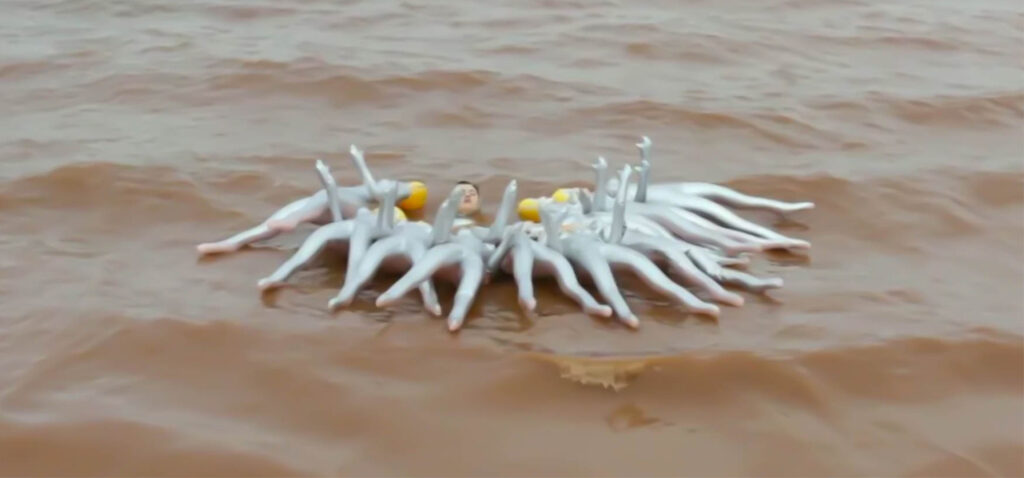Artists draw inspiration from many places including the environment that surrounds them. The opportunity for a change of scenery can prove especially valuable. At the Art Academy of Cincinnati the Stephen H. Wilder Traveling Scholarship provides just that, affording art students of all disciplines the chance to explore the world around them as fuel for their creative expression.
Elyse Johnson, AAC Alum, is the most recent of the many students that have benefitted from the Wilder Scholarship over the history of the award. As an artist, Johnson has been using performance based videos to investigate loops in nature, the way land rearranges itself and our contemporary relationship to the earth. But to make the work she really wanted to make, Johnson knew she needed to travel to a location where she could capture and interact with natural phenomena. After years of watching other graduating students use the scholarship to elevate their art, Johnson knew it was something she needed to shoot for.
“Watching graduating students plan a body of without limitations is something I was enamored with,” Johnson said. “A common obstacle in art school is reality — big, expensive art is the stuff of fantasy.”
But the Wilder Scholarship allowed Johnson to make her dream for her latest body of work, The Silver Screen, a reality. With the scholarship Johnson traveled to the Bay of Fundy to film a series of brief performative videos on location. Located on the Canadian Atlantic coast, the Bay of Fundy provided the perfect backdrop for Johnson’s work with the highest vertical tides in the world. The series of videos Johnson created evoke the effects of contemporary technological progress on mankind’s perspective of life on earth.
Judy from Elyse Johnson on Vimeo.
Check out a Q&A with Johnson below to learn more about her experience traveling on the Wilder Scholarship and making her art. To view more of Johnson’s work click here.
Q: What was your inspiration for the work you made on your trip?
The Silver Screen is an extension of my thesis work in a lot of ways. During my senior year at the Art Academy I investigated our relationship with nature as human beings, specifically in light of geological phenomenon. I interacted with projections of natural disasters within the confines of a lighting studio, a controlled environment. This trip was the natural next step in my studio practice, to tailor a series of performances for an actual environment. So I went outside.
In a way, this order of events is conceptually important to the work, as evidence of a larger process. As human beings, we are forever developing new technologies to read and understand our environments without ever really touching them. We have machines that measure earthquakes and predict the weather. We reach out with someone else’s arm. In the lighting studio, behind closed doors I was reenacting events, breaking them down and reconstructing them in hopes of illustrating my relationship with nature as something inherently imagined or fabricated. This isn’t to say that this relationship is any less authentic. I embrace virtual experiences as valid experiences. My decision to take my practice outside was instinctual.
Q: How did you discover the location originally? What about the Bay of Fundy made you choose it as your destination?
Following my dreams of responding to a tangible environment, I began to research natural phenomenon in a more specific way. Upon further investigation, I stumbled upon The Bay of Fundy. On the Atlantic Coast of North America, the Bay of Fundy runs between the provinces of New Brunswick and Nova Scotia and is home of the highest vertical tidal range in the world. The Bay of Fundy’s tides are semidiurnal, meaning each day there are two high tides and two low tides. The tides measure officially fifty feet in height. There are several variables responsible for this extreme, namely resonance and the shape of the bay. The resonance or rocking motion of the bay is not dissimilar from the way of water sloshes back and forth in a tub. The Bay of Fundy is an instance in which we can observe loops in nature. Over the past two year, I have focused on creating and reacting to visual and audio loops within my work. The natural world is full of these mechanisms. A tide is a perfect illustration of a loop or feedback process.
Q: What do you hope you captured in the videos you produced there? What do you hope people see in them?
Repetition is an important device in this body of work. In each video, I wear a silver skin suit in an attempt to illustrate my own physical separation from nature. The repeated uniform is meant to stand as a layer between the land and myself. It serves to contextualize the performer in the environment. The silver suit is present in an effort to deny my own essence, to appear sleeker than I actually am. For this project, I was chiefly interested in metallic pigments. The Bay of Fundy has a color palette of its own. I was interested in competing with this. The color silver has a feminine energy; it is related to the moon, the ebb and flow of the tides- it is fluid, emotional, sensitive, and mysterious. Silver has also taken on a new, more industrial context in contemporary society. And here lies the incredible paradox.
The title of this body of work, The Silver Screen, is relevant in more than one way. Silver, hierarchically, is one of the most important elements of this collection. The idea of silver as a conceptual camouflage in contemporary technological society was important, but even more important was how it functioned visually: silver was not camouflage within the literal environment. Visually, silver was doing something much different. I wanted the suit to act as a physical barrier between the environment and myself- a “screen”. The term “the silver screen” was originally made popular in the times of early motion pictures. I was interested in referencing this not only because the body of work is primarily video, but because of other similarities I was interested in discussing in this body of work. The term connotes film as an industry, the conscious progressive and industrial nature of all things in the hands of mankind.
I currently have five videos of the collection published on my website, although there are technically seven pieces. In the piece featured on the homepage of my website, Grander Gestures, I can be seen in costume, pulling fifty feet of silver wrapping paper into the Atlantic Ocean. The title was actually inspired by a conversation I had with an Art Academy professor. In this video, I was conceptually interested in inventing a gesture that could compete with the aggressive tides of the Bay. For a moment it is glittering and even mock ethereal, but ultimately nothing. Futility can be so overwhelming sometimes.
Q: How has this opportunity influenced your work and you as an artist?
In many ways, I went to Canada and met the worst version of myself. This trip was not a vacation. None of this work would have been possible without my dad, Scott Johnson, who accompanied me to Nova Scotia and helped me transport equipment, inflate props, hold umbrellas over the equipment, drive the car, and make sure the equipment does not blow over. We were there for ten days, and it rained for many of those days. We didn’t actually check the weather before we got there and found out too late that there was going to be a tropical storm. Some of the performances went all too smoothly, a source of much false hope. Some of them were nightmares, including the filming of The Ego of The Performer, a silent video of me rowing an inflatable raft at high tide. This action alone was significantly more frustrating and physically taxing than I had planned it to be. The entire video I am fighting to stay in the frame. Had I left the audio on for this video, you would hear more than the tide lapping at the shore. To be more specific, you would hear a stream of expletives exchanged between my father and I. It had started raining and I was worried about the camera, he was worried I was going to float away and wash up in Halifax because I did not know how to row the boat.
Another day, we were preparing the inflatable dolls for the Judy video, when it suddenly started raining. One doll would not stay inflated and an argument erupted. Here you’ll find me in my silver suit, a warm can of Nati Ice in my hand and I am crying loudly, running through the Canadian wilderness. It is not yet lunchtime.
These are just some of the memories that stand out, and they were important even if they don’t seem like it. Failure is important. These are experiences I was able to earn in the field and I am grateful for them. Up until this point, I had only worked alone in my studio practice.
Q: What’s next?
I’ve just recently embarked on some new, currently untitled work. I would describe it as amorous and significantly less macro than The Silver Screen. I’ve set up a small lighting studio in my kitchen and have been building small, pink landscapes. I use these landscapes as puppets, further investigating the ways in which land rearranges itself.
Q: In what ways has the AAC helped you grow as an artist?
The Art Academy has provided me with innumerable resources. I am originally from Memphis, TN, and I knew the first time I visited that this was exactly where I wanted to be. This is my favorite place I’ve ever been. The studios are great and the teachers devote personal time to the students. My four years at the Art Academy helped me make enormous leaps both conceptually and aesthetically in my work. I graduated feeling capable.










